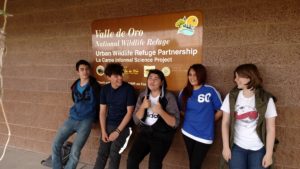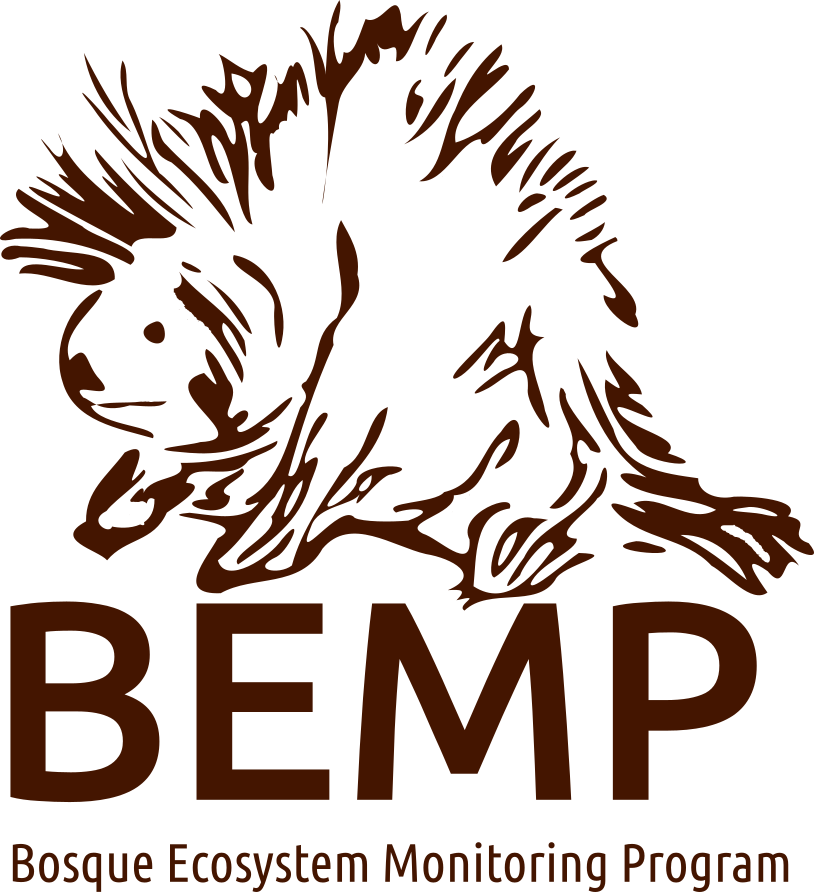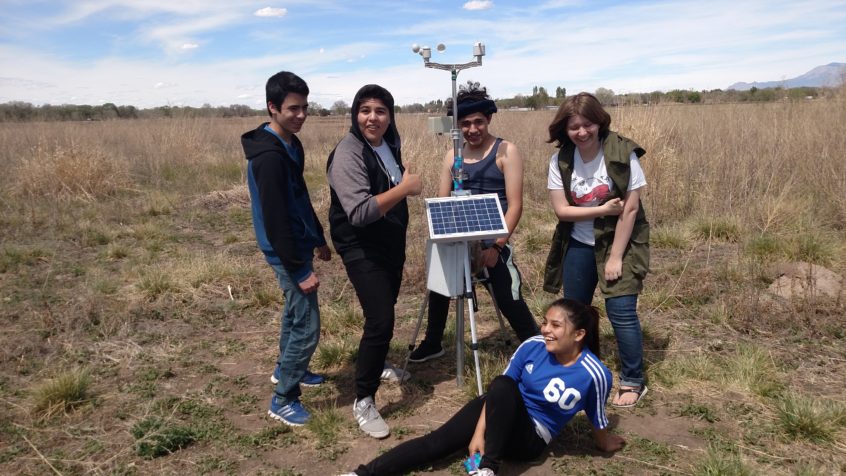Over the past two years BEMP has initiated an exciting and STEM-centric programming project to monitor the bosque. The project is a partnership between BEMP, two Albuquerque charter high schools, the Intel Corporation (a technology company based in Albuquerque), and the US Fish and Wildlife Service. The goals at the outset of the project were to increase technological literacy and provide data regarding climate conditions in the Middle Rio Grande Valley. Ambitious high school students designed and engineered their own weather stations to provide continuous data on climate variables such as wind direction, wind speed, precipitation, temperature, humidity, and light levels. Intel provided technological hardware (Galileo Gen 2 micro-processing boards) and the Arduino platform to program and run the solar powered weather stations.
 The students worked all year with Katie Elder, BEMP Student Research Coordinator, to execute this multifaceted and complex project. They learned coding language and practiced programming sensors to better understand the nuances of the Galileo boards. Students then built physical models of the sensors to have a deeper understanding of how the mechanics of the technology worked. Throughout the year-long project, students took periodic field trips to the bosque and made climate observations in the same spots where they planned to install their weather stations. On each field trip, the students took manual weather data using a Kestrel (handheld weather meter) and compass. By doing this somewhat onerous manual data collection, students understood the value in what they were designing. The weather stations they were building would collect the same data, but in a continuous, consistent, and automated way. In the spring, students physically built the weather station from the ground up, soldering and epoxying their creations part by part.
The students worked all year with Katie Elder, BEMP Student Research Coordinator, to execute this multifaceted and complex project. They learned coding language and practiced programming sensors to better understand the nuances of the Galileo boards. Students then built physical models of the sensors to have a deeper understanding of how the mechanics of the technology worked. Throughout the year-long project, students took periodic field trips to the bosque and made climate observations in the same spots where they planned to install their weather stations. On each field trip, the students took manual weather data using a Kestrel (handheld weather meter) and compass. By doing this somewhat onerous manual data collection, students understood the value in what they were designing. The weather stations they were building would collect the same data, but in a continuous, consistent, and automated way. In the spring, students physically built the weather station from the ground up, soldering and epoxying their creations part by part.
The final phase of the project was to deploy the weather stations into the field. Sophomore students at South Valley Academy worked on two weather stations which were both deployed at BEMP’s monitoring sites – one at BEMP’s newest site: San Jose and the other at the Valle de Oro National Wildlife Refuge, an urban refuge in Albuquerque’s South Valley neighborhood near the students’ school. High school students at Albuquerque Institute for Mathematics and Science deployed their weather station at the State Land Office site. This site and the San Jose site, have had artificial swales constructed – seasonal wetlands in areas where the water table is high. The weather station at Valle de Oro Refuge will soon be wetland habitat with a similar swale feature. All of the weather stations the students built will eventually provide essential baseline data for the Valle de Oro National Wildlife Refuge’s researchers, and these data will be comparable across the three sites. The data collection part of the project will likely be incorporated into next year’s project with a new group of students.
During this year’s project, students at both schools grappled with and mastered skills in creative problem solving, C++ programming, engineering, trouble shooting, and probably most importantly: how to work as a team to be successful. Additionally, students saw that the climate variables they planned to measure will inform us about climate change and how it affects this local ecosystem and the charismatic creatures within it, like porcupines (a favorite critter of the weather station builders). On one field trip, a student from South Valley Academy thought she spotted smoke coming from the bosque. She reported the incident to the police because since starting the project, she had come to feel more connected to the bosque and wanted to protect it. This demonstrates that the project transcended the science and education aspects and helped students become stewards of their local ecosystem.

